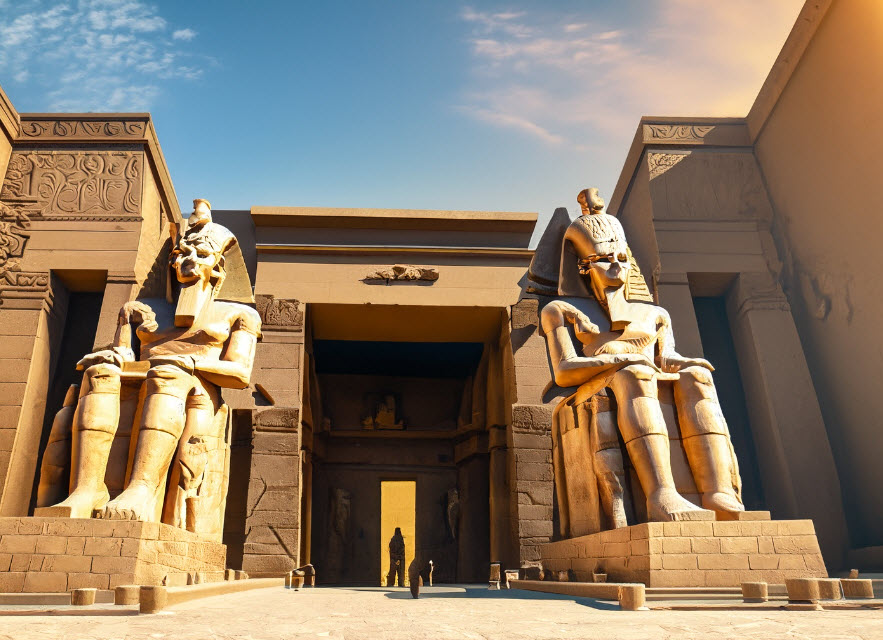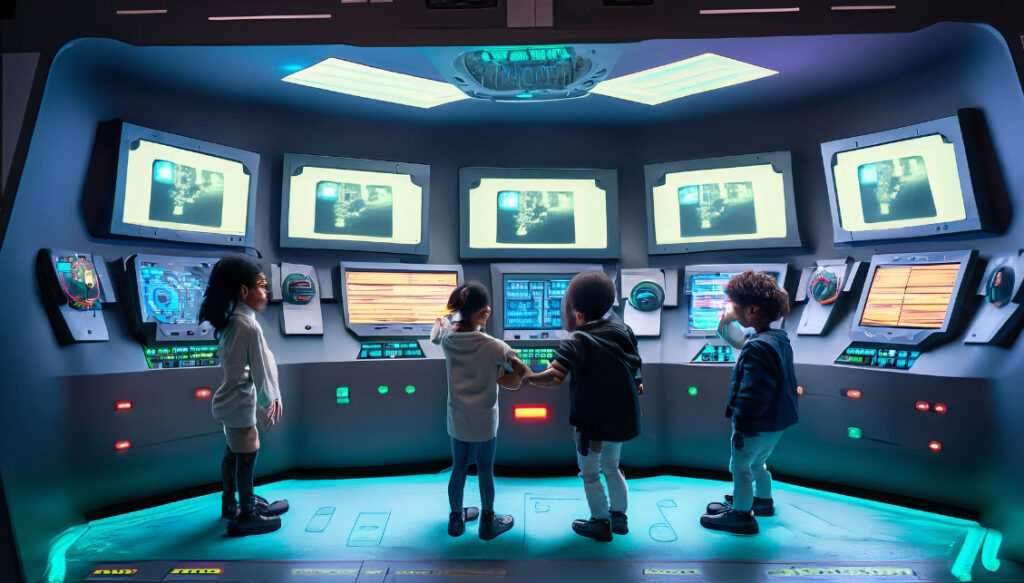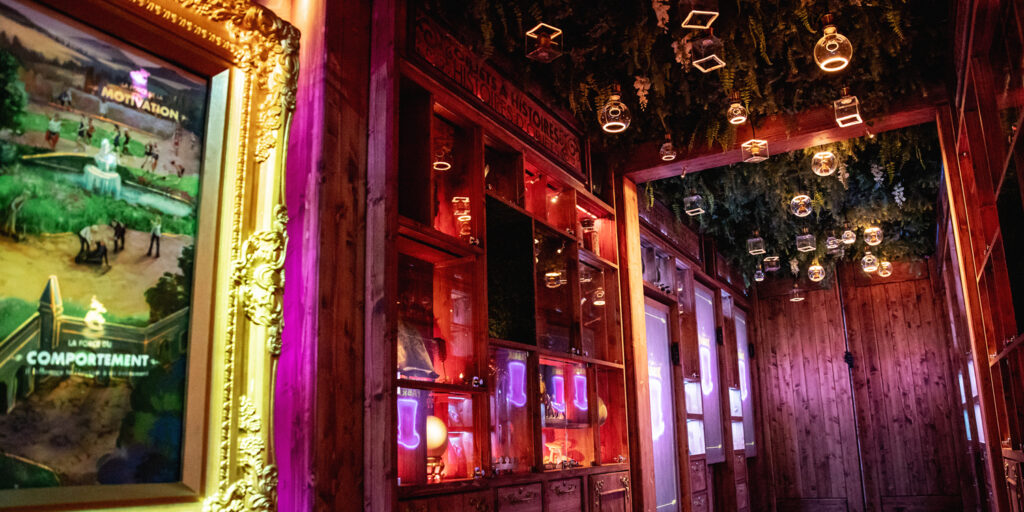While our society selects mathematics as the supreme form of intelligence, we are capable of a multitude of others that enable us to apprehend the world and solve the problems we encounter. And yet, we only really develop a few of them in the course of our lives, whether at school, at work, in our daily lives or in our leisure activities. Ultimately, we follow a pre-established itinerary made up of schemes into which we are formatted to fit without paying attention to our real skills. Like Mr Jourdain who wrote prose without knowing it, we use our abilities without really knowing how far we can go. You have to admit, it’s not easy to find your way around in these conditions.
Let’s try to understand together what these different intelligences are, and how to call on them more or less independently of each other, thanks to the magic of multimedia through the creation of interactive experiences.
For us, the queen of intelligences, the sesame, the magic word, the key, the master key, whatever, is emotional intelligence, the one that enables us to get involved in a situation and motivate us to act and think. Over the last few decades, it has been recognized that emotions are a source of motivation in learning and training. We can see the beginnings and first steps of use in museum institutions, for example, or various major exhibitions which are trying, with varying degrees of success, to develop their offer into a place for experimentation and play, without sufficiently emphasizing the emotional side.
If you immerse the visitor in a world through a memorable epic (storytelling), inviting them to follow a path strewn with inspiring events (gamification) and appealing to all five senses (interactivity), where every step stimulates curiosity, you’ll make them want to discover more and more, and want to share with others.


It’s the intelligence that enables us to use words, both spoken and written, and to juggle them with greater or lesser ease. To appeal to them, we engage audiences in interactive devices that capture their attention while inviting creativity and sharing.
Thanks to the power of digital technologies, it’s possible to harness this intelligence and implement interactive content such as facial recognition, voice commands (instantaneous translation) and written commands, as well as the ability to clearly express one’s request on search engines and chat rooms, by adapting one’s language – all of which play a central role in online forms of communication and collaboration, putting the participant in the position of participant/actor. To take things a step further, there are neural control systems. Although in their infancy and costly today, they will soon become indispensable.
This highly popular form of intelligence enables us to observe and analyze. But also categorize, calculate, measure, think abstractly and logically, and solve mathematical and scientific problems. To reveal it, we offer escape game or enigma courses.
The power of digital technologies, combined with more traditional scenography techniques, allow us to immerse audiences in life-size virtual or real universes. A collaborative and participative approach that gets everyone involved. And to put their powers of observation, analysis and problem-solving into action. This is the way to unravel riddles and puzzles.
Removed from everyday life, audiences find themselves immersed in a real or virtual environment. In a playful context, he will have to :
Extraordinary events that involve audiences and challenge their logical-mathematical intelligence in a memorable, playful and collaborative context.

It’s the ability to perceive and mentally represent things. And to arrange and imagine them in order to create drawings or graphic representations. As well as moving around or mentally moving objects in 3-dimensional space. It also determines our “sense of direction”.
We use digital technologies to reveal this through playful, interactive devices. These will challenge the player’s creativity. Involve your ability to think visually, create images and situate yourself in space in order to :
With it, you’ll be able to discern rhythms and timbres. And perceive sounds, express your emotions in music or write scores.
Imagine an XXL piano on which you’re going to play notes using your whole body. Or tap everyday objects to build your own symphony. Keep rhythm, sing, play a virtual musical instrument, reproduce musical phrases. Or recognize musical instruments and genres, and develop the ability to compose. These are all ways of revealing your musical intelligence. Remember the film “Close Encounters of the Third Kind”…
It’s the ability to control and interpret body movements. Sometimes to express an idea, an emotion or to act with objects.
To engage them, we suggest a number of fun, interactive and collaborative activities. In particular, based on the use of interactive and non-interactive digital technologies. Like tactile and interactive floor and wall tiles. But also video projections, video mapping, multi-screens and digital signage screens, kiosks, tables, etc.

It’s the ability to interact with others. But also to perceive their moods, intentions, motivations and emotions, to be sensitive to gestural messages and to adapt to contexts.
We playfully engage it within real or virtual devices to explore it in a variety of situations:
It’s the ability to know yourself. The ability to look at oneself and analyze one’s emotions and behavior.
We recommend devices that allow players to react to various situations. In which he will have to make choices in order to :
to enable him to act accordingly.
With Basile Bohard and his Neodigital studio, we firmly believe in the diversity of human intelligence and abilities. That’s why our approach revolves around the creation of captivating experiential devices that stimulate different intelligences, while bringing audiences together around universal multimedia experiences.
Whether it’s for an art exhibition, a museography, an explanatory installation, a showroom or multimedia content, our talented team is ready to co-create and realize tailor-made experiential paths that showcase everyone’s talents. We strive to instill a sense of wonder in every project, enabling new knowledge to be explored collectively.
We believe that every individual has his or her own intelligence, and we are committed to making the most of this potential. By taking different intelligences into account, we create immersive experiences that arouse the interest, curiosity and passion of your audience.
Through a variety of adapted devices, we pave the way for a dynamic exploration of the subjects covered. By stimulating curiosity, we encourage your audiences to discover and develop their hidden talents. All the while cultivating their thirst for learning.
Thanks to our expertise in creating multimedia experiences, we can help you reveal the unsuspected talents of your audiences. Our aim is to create experiences that go beyond mere entertainment. By offering shared moments of wonder and discovery.
By working with Basile Bohard and Neodigital, you benefit from tailor-made support to create innovative and engaging immersive projects. Our passion for the art of immersion and our commitment to promoting multiple intelligences make us the ideal partner for transforming your ideas into memorable multimedia experiences that will leave a lasting impression on your audiences. Let us reveal your audience’s hidden talents and marvel at the exceptional results we can achieve together.
CEO – Directeur de la création